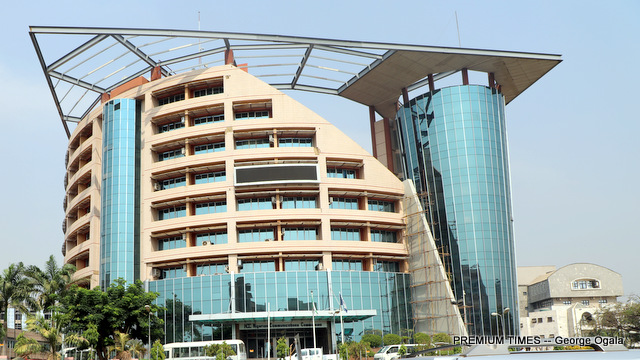Nigeria’s unemployment rate stood at 5.3 per cent in the fourth quarter of 2022 and 4.1 per cent in the first quarter of 2023, the National Bureau of Statistics (NBS) has said.
The bureau said this in its Nigeria Labour Force Survey (NLFS) report for Q4 2022 and Q1 2023 launch on Thursday.
The NBS had in March 2021 reported that Nigeria’s unemployment rate rose to 33.3 per cent, translating to some 23.2 million people, the highest in at least 13 years and the second-highest rate in the world.
The figure jumped from 27.1 per cent recorded in the second quarter of 2020 amidst Nigeria’s lingering economic crisis made worse by the coronavirus pandemic. The unemployment rate in the country has more than quadrupled since 2016 when the economy slipped into a recession.
 National Bureau of Statistics (NBS)
National Bureau of Statistics (NBS)
In April 2021, the then Nigeria’s Minister of Labour, Chris Ngige, claimed that the World Bank questioned the methodology employed by the NBS to generate its employment statistics.
He added that he had on several occasions queried the employment statistics released by the NBS.
“We have a virtual meeting of the national economic advisory council with the World Bank to look at Nigeria’s modalities for employment statistics data collection.
“There has been a little confusion there as to the accuracy of data generated by the NBS. So, we want to align everything tomorrow (Thursday). The World Bank says the NBS methodology doesn’t conform to the global standard, especially the ILO format of arriving at such (an) employment Index.” Mr Ngige said at the time.
READ ALSO: NBS revises methodology for unemployment report
But the NBS dismissed Mr Ngige’s claim, adding that the World Bank never questioned its methodology.
On Thursday the NBS said it has enhanced its methodology of collecting labour market data through the Nigeria Labour Force Survey (NLFS) in line with International Labour Organisation (ILO) guidelines.
“The data collection for the revised NLFS is based on a sample of 35,520 households nationwide.
“It is conducted continuously throughout the year, with national-level results produced quarterly and state-level results at the end of a full year,” the bureau said.
Highlights
A breakdown of the new report showed that About three-quarters of working-age Nigerians were employed 73.6 per cent in Q4 2022 and 76.7 per cent in Q1 2023.
This, the report said shows that most people were engaged in some type of jobs for at least one hour in a week, for pay or profit.
It said about one-third (36.4 per cent in Q4 2022 and 33.2 per cent in Q1 2023) of employed persons worked less than 40 hours per week in both quarters.
“This was most common among women, individuals with lower levels of education, young people, and those living in rural areas.
“The underemployment rate, which is a share of employed people working less than 40 hours per week and declaring themselves willing and available to work more, was 13.7 per cent in Q4 2022 and 12.2 per cent in Q1 2023,” it said.
The NBS said the share of wage employment was 13.4 per cent in Q4 2022 and 11.8 per cent in Q1 2023.
“Most Nigerians operate their own businesses or engage in farming activities. The shares are 73.1 per cent and 75.4 per cent in Q4 2022 and Q1 2023 respectively.
“A further 10.7 per cent in Q4 2022 and 10.6 per cent in Q1 2023 were engaged in helping in a household business,” it said.
In Q4 2022, 2.6 per cent were engaged as Apprentices/Interns and 2.2 per cent in Q1, 2023.
“Unemployment stood at 5.3 per cent in Q4 2022 and 4.1 per cent in Q1 2023.
“This aligns with the rates in other developing countries where work, even if only for a few hours and in low-productivity jobs, is essential to make ends meet, particularly in the absence of any social protection for the unemployed,” the NBS said.
It noted that 22.3 per cent of the working-age population were out of the labour force in Q4 2022, while it was 20.1 per cent in Q1, 2023.
Support PREMIUM TIMES' journalism of integrity and credibility
Good journalism costs a lot of money. Yet only good journalism can ensure the possibility of a good society, an accountable democracy, and a transparent government.
For continued free access to the best investigative journalism in the country we ask you to consider making a modest support to this noble endeavour.
By contributing to PREMIUM TIMES, you are helping to sustain a journalism of relevance and ensuring it remains free and available to all.
TEXT AD: Call Willie - +2348098788999

.png)












